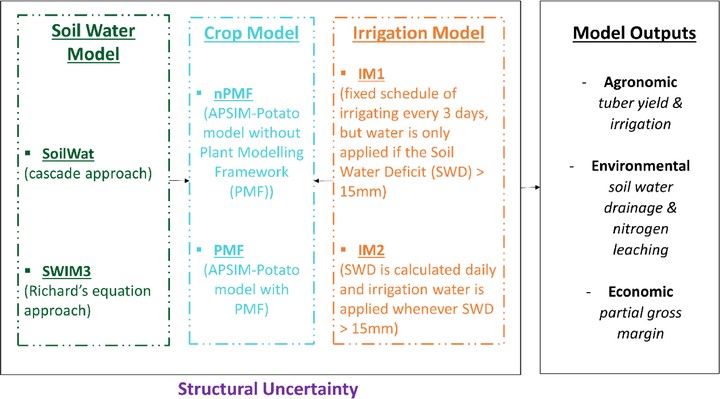Investigating the effects of APSIM model configuration on model outputs across different environments

Abstract
The three major sources of uncertainty in crop models are model inputs, structure, and parameters. Model structure is one of the major contributors to this uncertainty; however, its quantification is difficult due to limitations in controlling confounding effects from parameter and input uncertainty.
The objective of this study was to quantify the contribution of structural uncertainty to the variance in model outputs produced by the Agricultural Production Systems sIMulator (APSIM). Outputs investigated included yield, irrigation requirements, partial gross margin, drainage, and nitrogen (N) leaching.
Eight model structures differing in the choice of soil water model, crop model, and irrigation model were developed within a single APSIM version (v.7.10) and tested under three contrasting environments (climate × soil) across 120 years. We quantified:
- The model structure uncertainty (from soil water, crop, and irrigation models) using analysis of variance (ANOVA) and deviation analysis.
- The variability of outputs due to model structure and climate using the coefficient of variation.
Most structural uncertainty resulted from first-order effects of model component choices rather than second-order interactions. Furthermore, uncertainty from sub-model choices was not necessarily related to the structural complexity of components.
The effects of structural uncertainty on predictions used for agronomic, ecological, or policy decisions were strongly impacted by site and climate conditions. High rainfall sites (~1330 mm/year) had less uncertainty than low rainfall sites (~610 mm/year).
These findings highlight the need for uncertainty assessment across the full range of model applications. This study demonstrates the value of a component-based modeling framework for quantifying uncertainty in crop modeling studies.